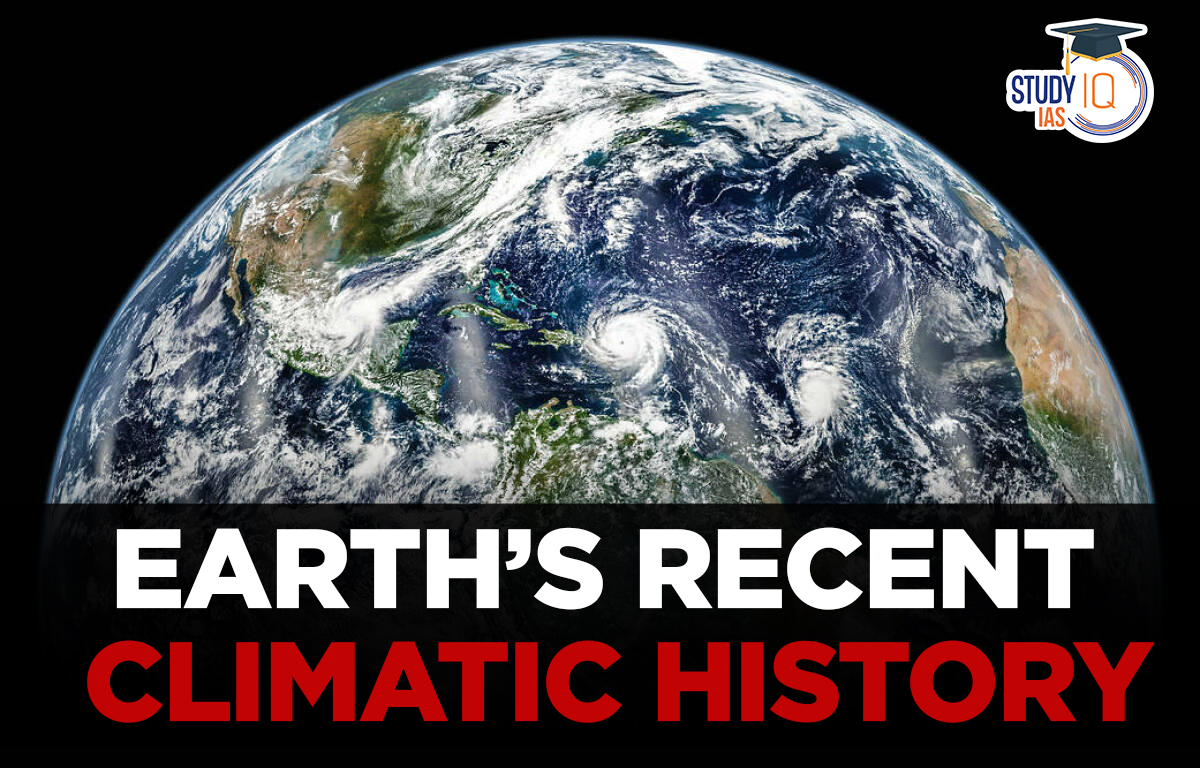Table of Contents
Key Highlights of Earth’s Recent Climatic History
- Ice core analysis: The findings of the study are based on the water-isotope analysis from the West Antarctic Ice Sheet (WAIS) Divide ice core, the longest ice core ever drilled by US researchers.
- Summer and winter temperatures:
- Summer temperatures in West Antarctica increased through the early-to-mid-Holocene, reached a peak 4,100 years ago and then decreased to the present.
- Winter temperatures varied less overall, but also fluctuated in the early Holocene, probably owing to changes in meridional heat transport.
- Milankovitch theory: The study also validates one aspect of the Milankovitch theory that has not been previously proven i.e. how the intensity of sunlight influences the seasonal temperatures in polar regions.
- Significance of the study: The detailed data on long-term climate patterns of the past help scientists in studying the impacts of greenhouse gas emissions on our present and future climate.
What is Holocene Epoch?
- It is the current geological epoch in the Earth’s history, which began about 11,700 years ago at the end of the last major ice age.
- It is marked by a relatively stable climate, as well as the emergence and development of human civilization.
- It is also known as the Anthropocene, due to the significant impact that human activities have had on the Earth’s environment and climate.
What are Ice Cores and how do they tell about Earth’s Past Climatic History?
- Ice cores are cylindrical columns of ice, drilled from ancient ice sheets, mostly in Antarctica and Greenland.
- They provide valuable long-term data trapped in time about everything from past atmospheric concentrations of greenhouse gases to past temperatures of the air and oceans.
- Here are some specific ways in which ice cores help to study the Earth’s climatic history:
- Temperature reconstruction: Researchers can use the isotopic composition of the ice, such as the ratio of oxygen isotopes, to infer the temperature at the time the ice was formed.
- Gas Analysis: Trapped air bubbles in the ice provide a snapshot of the composition of the Earth’s atmosphere at the time the ice was formed.
- Ice core layering: Layers in ice cores correspond to years and seasons, with the youngest ice at the top and the oldest ice at the bottom of the core. This helps us to understand past climate conditions.
- Climate Forcing: Ice core records can also provide insight into the various factors that have caused past climate change such as solar radiation, volcanic activity, and changes in the Earth’s orbit.
What is Milankovitch Theory?
- The Milankovitch theory, named after the Serbian astronomer Milutin Milanković, is a theory that explains how variations in the Earth’s orbit and rotation affect its climate.
- The theory is based on three key postulates:
- Eccentricity: The shape of the Earth’s orbit around the sun changes over time, varying between more circular and more elliptical. When the orbit is more elliptical, the Earth is closer to the sun during the northern hemisphere’s summer, which leads to increased solar radiation and warmer temperatures.
- Obliquity: The tilt of the Earth’s axis of rotation changes over time, varying between 22.1 and 24.5 degrees. When the tilt is greater, the northern hemisphere experiences more extreme seasons, with warmer summers and colder winters.
- Precession: The direction of the Earth’s axis of rotation wobbles over time, completing one cycle every 26,000 years. This affects the timing of the seasons, with changes in the position of the northern hemisphere relative to the sun during the summer solstice.
- The theory states that these three factors also interact with each other and with other factors such as ocean currents and greenhouse gases to drive long-term climate change over tens and hundreds of thousands of years.



 Personality Rights in India: Expanding P...
Personality Rights in India: Expanding P...
 Judicial Recognition of Child Traffickin...
Judicial Recognition of Child Traffickin...
 Misrepresentation and Fraud in Digital T...
Misrepresentation and Fraud in Digital T...

























